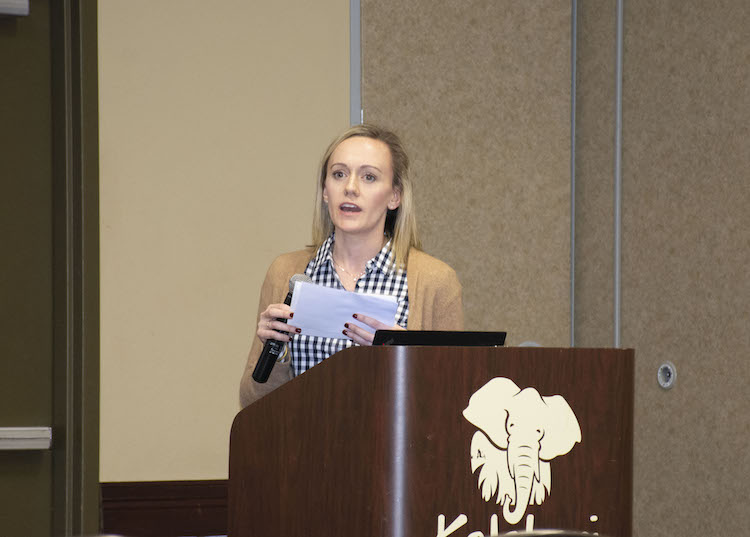
Most farmers are passionate about their animals and the food they produce. Some farms turn that passion into a business, selling products directly to consumers.
To stand out among the crowd, it helps if your potential customers know who you are and what makes you special. It is important that farms traveling down the path of direct marketing take time to build their brand.
Jenni Gavin of Gavin Farms shared her experiences with building a farm’s brand at the Resilient Farms Conference held in Wisconsin Dells, Wis. Gavin farms with her husband, Jim, and her brother-in-law, Matt. All three have full-time jobs in the agriculture industry in addition to running their cow-calf operation.
Gavin Farms is located in Reedsville, Wis. The Gavins purchased a retired dairy farm and started with 12 Red Angus cows and 300 acres of cropland. Today, they have 65 cow-calf pairs, mostly Red Angus with a few Crossbreds. The cattle are pasture raised and grain finished. They have a commercial freezer on the farm and direct market their beef to consumers.
When the Gavins decided to create a brand for their products, “We had no idea how it was going to impact our business,” Gavin said. To get started, they worked with a designer to create their logo, determine a color scheme, and shape their mission and vision statement. Gavin said that all impacts how they run their business today.
“It’s helpful to think of branding as your business’ reputation and its identity, and it is what sets you apart from others in the industry,” Gavin explained. “The brand is the idea, while branding are the visuals that help complete that idea. It’s your fonts, colors, imagery, logos, and how you make your customers feel.”
Gavin said one of the biggest challenges she faced initially was convincing Jim and Matt to make the investment in branding, because there is a cost to it, but they are happy they spent the money. “We all agree it has been impactful for our business, and we are all very grateful we decided to take the risk and make that investment,” she noted.
In the past three years of marketing with their branding, Gavin said they have gained more exposure within the community, built new relationships, and drastically increased sales. “Customers recognize that we are going the extra mile for them,” she explained. “It makes our jobs as farmers that much more rewarding, knowing the customers that we are feeding really appreciate everything that we do.”
Creating a brand has benefitted them as farmers, too. She said, “We’ve learned a ton about ourselves and why we do what we do. We have really honed in on our mission and vision statements. We have found our voice and confidence in who we are and what makes us different.”
Branding also goes beyond logos and labels; it includes interactions with consumers. The Gavins have hosted a few “farm to table” events on their operation to help connect people to their food. They pair up with other local businesses when possible, and they are also active on social media.
Gavin admitted that branding can be costly, and it takes time to create and maintain your farm’s image. She has learned over time that quality over quantity is more important when it comes to promoting your brand.
Gavin encouraged other farms looking to sell directly to customers to create their own identity. “It helps tell your audience who you are, what you do, and why your product is going to benefit them,” she said. “Investing in branding has been another tool for us that has been really important in helping share our story as small farmers.”

The author is an associate editor and covers animal health, dairy housing and equipment, and nutrient management. She grew up on a dairy farm near Plymouth, Wis., and previously served as a University of Wisconsin agricultural extension agent. She received a master’s degree from North Carolina State University and a bachelor’s from University of Wisconsin-Madison.








